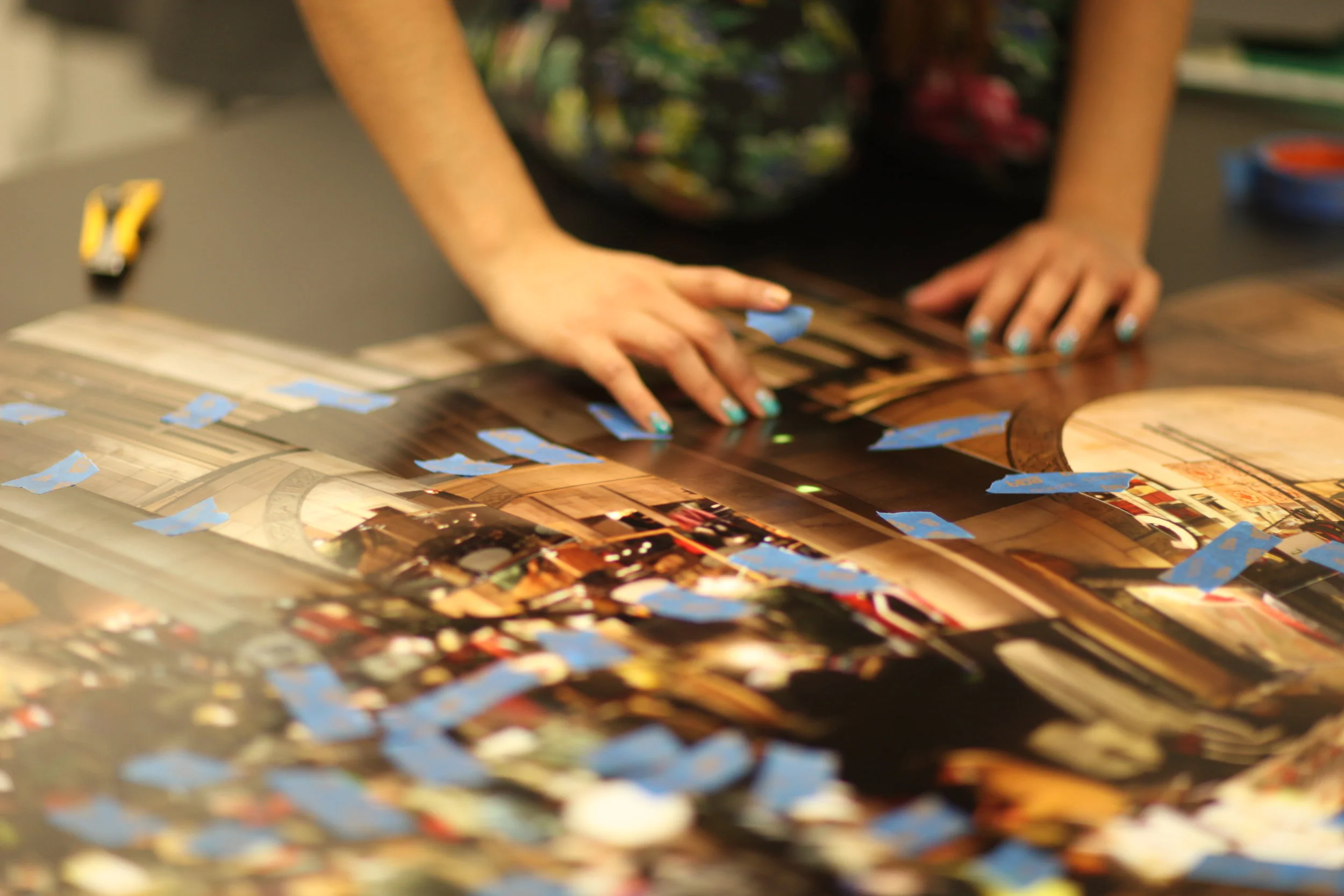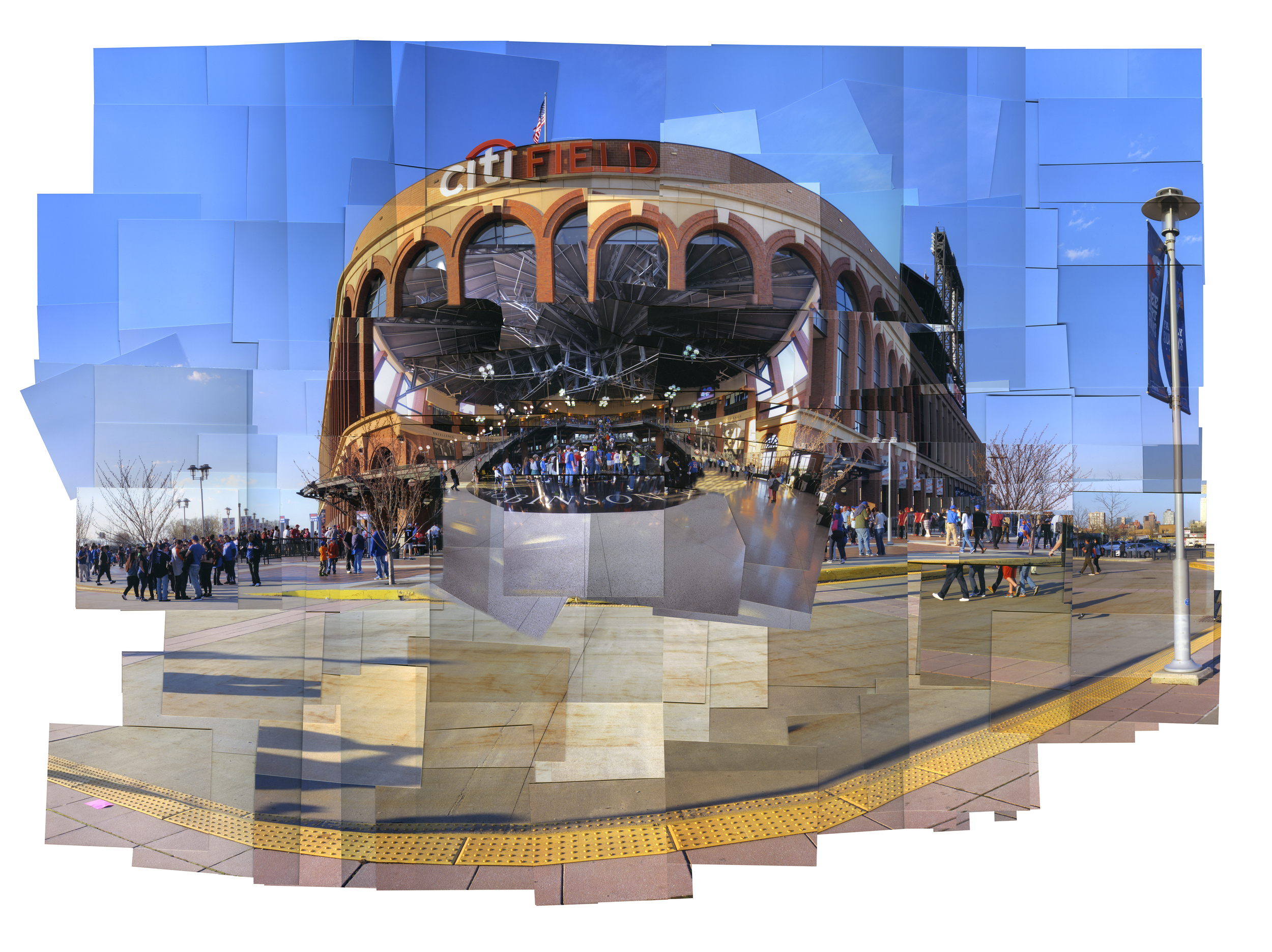Gemma Lopez: Capturing Space and Passages of Time
Gemma Lopez, Untitled Winter, 2017 Inkjet Print, 12 x 40in.
Interview with Justin Archer and lens based artist, Gemma Lopez. Gemma has earned several degrees including a BA in Architecture from Woodberry University, Post-Baccalaureate in Photography from San Fransico Art Instute, and an MFA in Photography, Video and Related Media at School of Visual Art in New York, NY. Originally published in Fall 2017
J: Gemma, you received an undergraduate degree in architecture before pursuing a post-baccalaureate and then a masters in photography. What was it that caused you to shift your interest from architecture to photography, and how has architecture affected the content of your work?
G: While studying architecture I was introduced to a variety of art mediums such as graphic design, photography, drawing, and screen-printing. After briefly working in the architecture field I realized that what I actually wanted to do was pursue a career in art. Getting exposed to different mediums in architecture school helped me zone in on photography. Even though I no longer work in the field of architecture I am still very interested in the design process and draw my ideas from architectural theory. Built environments are at the base of all of my art projects and my architecture training definitely influences the way I perceive spaces and the way people move within them.
J: The overall composition of your images focus on a large architectural structure compiled of several smaller photographs. I am curious how you make decisions about the larger composition. How do you determine which smaller images to work with to create the larger architectural photograph?
G:It consists of a lot of trial and error. In my process I group together the images that I’ve photographed on the same day and time. I then composite all the images together and begin the layering process to see what pieces work with each other. I consider perspective, where the sun is stationed, and in the “untitled” pieces I really try to focus on the volume of people to show the way the space is being occupied and not occupied throughout the year.
J: Photography has often focused on capturing or demonstrating an event as documentation of a moment in time. Does this line of thought influence your work? In using multiple images are you working to create a more authentic expression of a moment that a single photograph could?
G: I am interested in spaces that go through high volumes of activity to none. I photograph hourly during an event and by using multiple images in one composition I am able to portray the passage of time and its many occurrences. In the “untitled” series I photographed Coney Island (in Brooklyn) not only hourly but also seasonally. I photographed all 4 seasons to show the drastic change throughout the year. It’s so alive during the summer and in the winter it’s a ghost town, which changes the feel and look of the site.
Studio shot. Image provided by the artist.
J: I am interested in what your process looks like. You talk about analyzing, deconstructing, and reinterpreting certain spaces, can you elaborate on what all goes into that?
G: Before I photograph a site I do research on that particular location. For instance, I determine it’s main attractions and research its peak and bottom hours of occupancy so that I know what to specifically photograph in order to best portray the site’s character. At the site I take multiple images from different perspectives on an hourly basis.
G: The renderings and photographs we often see in architecture magazines portray the spaces as picture-perfect and dictate the way people should be using them. It’s interesting to visit sites and see how they are actually used as well as how they fit in with their existing surroundings. Sometimes the architect's intention of how the building should be used fails and I like to depict the unexpected usage and in some cases, the decay of a space. In this sense- I am deconstructing its prestige image, reinterpreting it’s real function and analyzing the way people transform it to be other things.
J: What type of photography do you utilize? Are your final images digitally composed or do you print and cut each one out to create your composition?
G: I like being hands on with the work I do so after a shoot, I print all the images I take and collage them by hand. This technique gives them a unique tactile quality. I then scan the collages and manipulate them digitally because I have more control of the overall composition.
J: You received your master’s in photography from the School of Visual Arts in New York. How do you think that transformed the work you were making from the post- baccalaureate program you were a part of?
G: During the post-baccalaureate program I was conceptually re-exploring photography, being introduced to artists, learning new ways of analyzing information and refining my technical approach to photography. I essentially was breaking away from my architectural training, which was a lot harder than I thought it would be.
Gemma Lopez, 30 Baseball Stadiums: Citi Field ink jet print, 40 x 30in.
By the time I got to SVA I had changed my process and had a better focus on what my interests were which allowed me to then solely concentrate on producing art and applying what I had learned during my Post-Baccalaureate studies. Additionally, I found NY to be an ideal city that houses the types of sites I tend to photograph.
J: Are there any new projects that you are working on, or processes you are exploring?
G: I am currently working on a project called “30 Baseball Stadiums” (a take on Ed Reucha’s book “Twenty-six Gasoline Stations”) where I am documenting all 30 MLB stadiums across the country. I started this project back in 2015 and so far I’ve covered 14 baseball stadiums. Stadiums offer the "on and off" aspect that I focus on in a vivid way. There's an anticipation that a fan feels before the game, a crowded-intense energy during the game and finally a dramatic end when the game is over. The “end of the game” feeling is intensified even more during the off-season when the sites are low lit and exudes a feeling of loneliness (especially the ones that are located in the city outskirts). As a baseball fan, it's fascinating to experience the space beyond its allotted game time. In a way I am cataloging these sites and hoping that I can create something with the different and/or similar qualities that may emerge when all are presented together.
to see more work, visit gemma-lopez.com.



